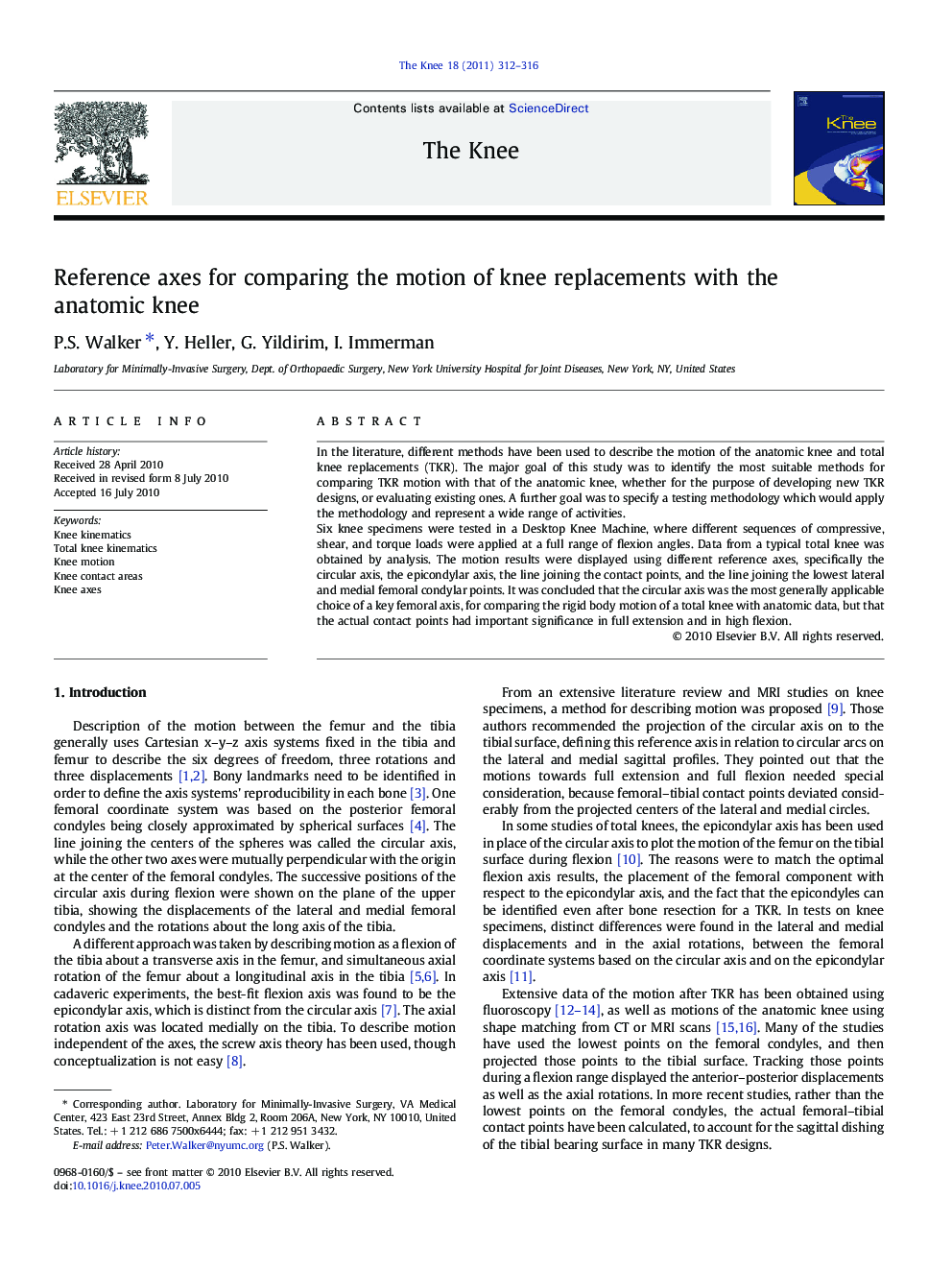| Article ID | Journal | Published Year | Pages | File Type |
|---|---|---|---|---|
| 4078025 | The Knee | 2011 | 5 Pages |
In the literature, different methods have been used to describe the motion of the anatomic knee and total knee replacements (TKR). The major goal of this study was to identify the most suitable methods for comparing TKR motion with that of the anatomic knee, whether for the purpose of developing new TKR designs, or evaluating existing ones. A further goal was to specify a testing methodology which would apply the methodology and represent a wide range of activities.Six knee specimens were tested in a Desktop Knee Machine, where different sequences of compressive, shear, and torque loads were applied at a full range of flexion angles. Data from a typical total knee was obtained by analysis. The motion results were displayed using different reference axes, specifically the circular axis, the epicondylar axis, the line joining the contact points, and the line joining the lowest lateral and medial femoral condylar points. It was concluded that the circular axis was the most generally applicable choice of a key femoral axis, for comparing the rigid body motion of a total knee with anatomic data, but that the actual contact points had important significance in full extension and in high flexion.
